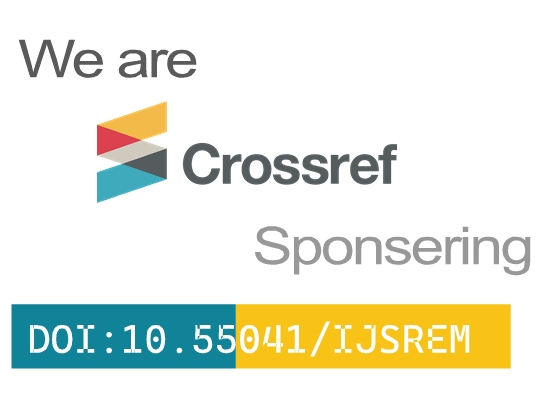AI-Powered Virtual Try-on System for Fashion Designing
Kalaivani.K 1, Kishore M2, Maharaja R3, Rafic S4, Sourav N S5
Assistant professor, CST, SNS College of Engineering, Coimbatore – 641107. Email: kalaivani.k.csd@snsce.ac.in
Final Year, CST, SNS College of Engineering, Coimbatore – 641107. Email: kishorem112004@gmail.com
Final Year, CST, SNS College of Engineering, Coimbatore – 641107. Email: mahaaraja03@gmail.com
Final Year, CST, SNS College of Engineering, Coimbatore – 641107. Email: rafic1906@gmail.com
Final Year, CST, SNS College of Engineering, Coimbatore - 641107. Email: souravsasi12@gmail.com
ABSTRACT :
The "AI-Powered Virtual Try-On System for Fashion Designing" is an innovative solution aimed at transforming the fashion retail and design industry through advanced technologies such as artificial intelligence (AI), computer vision, deep learning, and augmented reality (AR). This platform enables customers and designers to digitally visualize garments on real-time human models, reducing dependency on physical trials and enhancing personalization. The system leverages body measurement extraction, 3D garment simulation, and generative AI to provide realistic fitting experiences. It significantly minimizes production costs, reduces return rates in online shopping, and improves customer satisfaction. With features such as personalized recommendations, real-time fabric simulation, and cross-platform accessibility, the system sets a new benchmark in virtual fashion innovation. The rapid growth of e-commerce and digital fashion has increased the demand for interactive and personalized shopping experiences. This paper/project proposes an AI-powered Virtual Try-On (VTO) system that enables users to visualize how garments would appear on them without physical trials. The system integrates advanced computer vision and deep learning techniques, including human body segmentation, pose estimation, and garment warping, to generate realistic try-on results. By leveraging state-of-the-art models such as CP-VTON and pose-guided networks, the proposed solution accurately aligns and overlays clothing items onto user images while preserving fabric details, body shape, and occlusions. Additional features such as size adjustment, color and pattern customization, and designer-oriented garment uploads enhance flexibility for both consumers and fashion designers. The system aims to reduce product return rates, improve customer satisfaction, and accelerate the design-to-market pipeline in the fashion industry.
Keywords – AI in fashion, virtual try-on, computer vision, 3D garment simulation, augmented reality, generative AI, fashion design technology.







